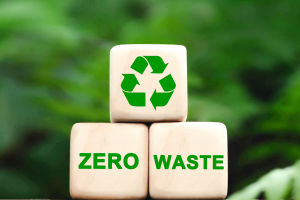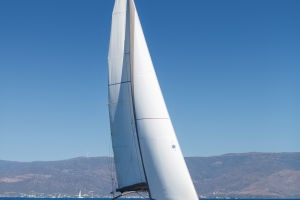In ancient times, people used windmills to pump water and grind grain, and they used sails to navigate ships. Can we "call the wind" to "generate electricity"?
Scientific practice has proven that harnessing wind energy can indeed generate electricity, and it requires no fuel while producing no radiation or air pollution.
Under the influence of sunlight, the uneven heating of the air in different places creates airflow, resulting in wind. Wind energy is essentially the kinetic energy of air, an infinitely renewable energy source.
The principle behind converting wind energy into electricity is straightforward and similar to an electric fan operating in reverse. When an electric fan is powered on, the electric motor converts electrical energy into kinetic energy, causing the fan blades to rotate and generate wind. In wind power generation, this process is the wind moves the blades of a turbine, causing them to rotate and drive a generator to convert wind energy into electricity.
A wind turbine system, including the rotor, generator, and tower, is needed for wind power generation. The rotor consists of two or more blades, which are turned by the wind, converting its kinetic energy into mechanical energy. The generator then converts this mechanical energy into electrical energy. The tower is built tall enough to support the rotor and generator.
You may have noticed that most wind turbines have three blades rotating. This is because extensive theoretical calculations and wind tunnel experiments have shown that the balance of three-blade rotors is better during operation compared to those with more blades. Three-blade rotors have advantages such as lighter weight per blade and longer blade length, leading to higher wind energy utilization rates.
Now, regarding "calling the wind" to "generate electricity," while it's not exactly like the traditional methods mentioned earlier, innovative concepts such as kite-based wind power generation are emerging.
Specialized kites equipped with sensors and made of lightweight materials have been developed to harness wind energy at higher altitudes. These kites generate significant lifting force when flying almost vertically in the wind direction, which is then transmitted to a ground-based generator through a tethering system.
In conclusion, wind power has become a major clean and renewable energy source in this era of energy conversion. From ancient times to the present, humanity has continuously explored ways to better utilize resources from nature. Wind power, as a significant achievement in this endeavor, not only provides reliable electricity but also contributes to environmental protection.
With ongoing technological advancements, we can anticipate even more innovative wind power generation solutions, offering cleaner and more sustainable energy for our future. Let's look forward to the continued development of wind power, contributing to a more sustainable future for humanity.


